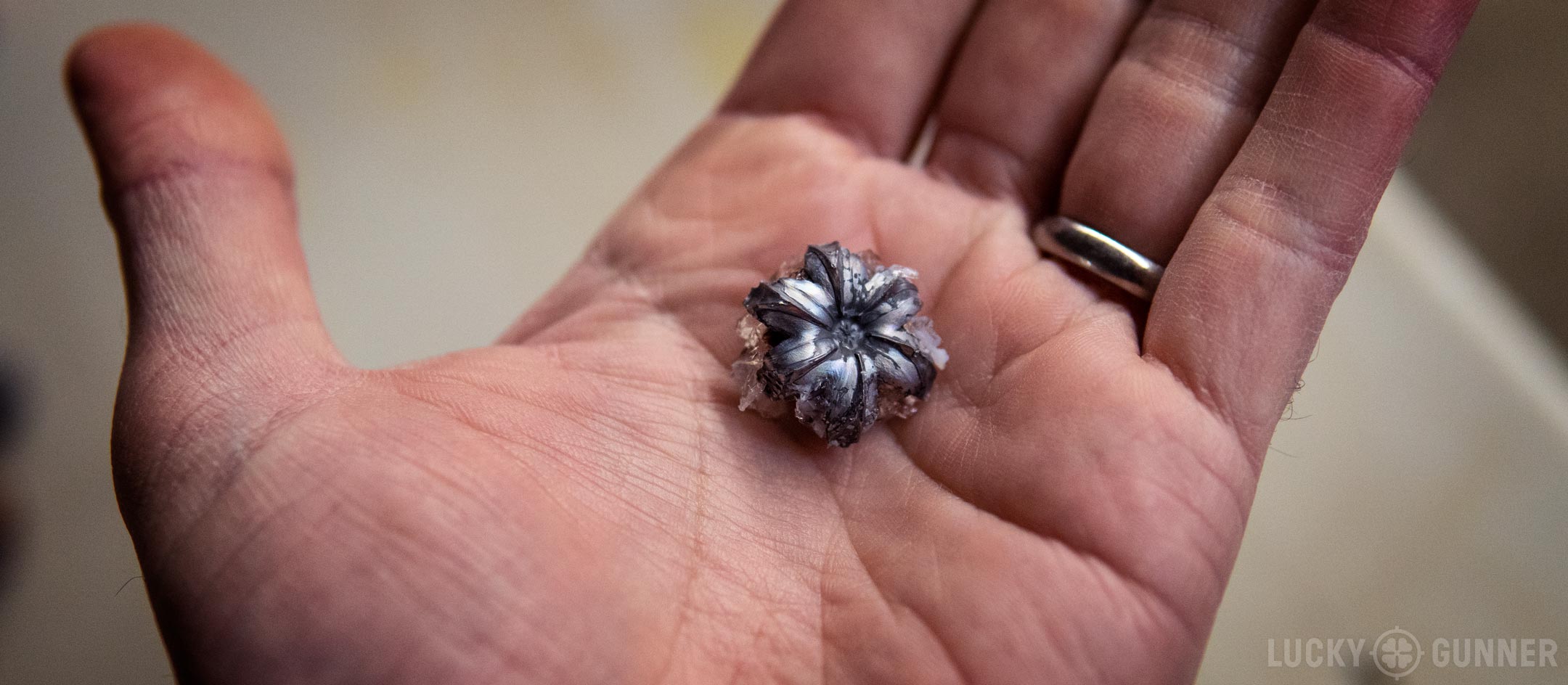So, the gist of the article is that there is so little difference between the permanent tissue damage that different handgun rounds do that no 9mm or greater handgun round is substantively better than another.
[snip]
I really like this video, referred to it earlier, and have frequently posted it anytime a religious war over cartridges breaks out.
As they point out, gel is more like a yardstick or measuring tape: an arbitrary, but agreed upon, common baseline we can all agree on to compare apples to apples. It is "calibrated to human tissue," but doesn't account for the various density differences of bone, lung, and muscle. A big takeaway is the difference between handgun cartridges is negligible compared to the difference between any handgun and a rifle. So, they say, emphasis should be placed on what one can shoot well.
Most knowledgeable shooters will repeat the mantra: shot placement is king. That dovetails nicely with where they suggest emphasis should be placed. If a shooter is significantly more likely to get solid hits with a 380ACP than the 10mm, than they are better off with the 380ACP. That doesn't mean the 380 is "just as powerful" as 10mm, or just as effective, but does mean for that shooter, 380 will likely be more effective. A shooter who can shoot a 10mm as well as they shoot a 380, is probably better off with 10mm.
As a metric, gel is very useful. As a diagnostic for expansion, gel is essential. Like any device though, gel has limitations. Even though numerous countries have minimum energy requirements for taking game, gel does not directly account for energy. Both high and low velocity projectiles can be engineered to penetrate the FBI standard 12"-18" in gel, but the energy they impart to the target is substantially different. The Federal expert's answer as to what happens to the "excess" energy is speculative and only refers to permanent damage, not shock to the system. While they say they've seen a correlation between the gel test penetration and performance on the street, absent a comprehensive analysis of lethal force encounters, those are anecdotes tending toward confirmation bias.
They further claim that velocity is not a concern in bullet expansion. Their assertion velocity is irrelevant is overstated. Just look at any 380 ACP test, done to FBI standards, and a majority of 380 ammo fails to expand in shorter barrel handguns. I suspect he would rephrase that to explain he meant they can make a bullet that will reliably expand at typical velocities. Fair enough; then why do so many 380 defensive rounds fail to expand?
In another video, Chris Baker acknowledges there are factors not captured in gel tests, but the results of the gel tests are serving their purpose. I think that is true.
Where 20 years ago, I would've accepted the FBI's paradigm and standards as gospel, not so much any more. Manufacturers engineer and market according to FBI standards. The FBI is obsessed with penetration because in the Miami shootout the eventually fatal shot failed to penetrate the heart of a perp who kept shooting for another 90 seconds or more. However, even the FBI struggled with going to 10mm, weakened 10mm, then 40S&W, weakened 40S&W, and finally back to 9mm to keep qualification scores at an acceptable level. There is a logic there considering the emphasis should be placed on what one can shoot well. Not surprisingly, the FBI now argues "with improvements in bullet technology" 9mm is "just as effective" as
___[fill in the blank]. I think that's an over-simplification partially driven by confirmation bias, and not accurate for many people in some situations.
There is alternative data and an alternative analysis provided by Evan Marshall and Edwin Sanow in their books on "stopping power" (3 different titles). If their data is correct, higher velocity and higher energy improve effectiveness. The marginal improvement does not compensate for poor placement, so again, emphasis should be on what one can shoot well. However, for those who can shoot faster, higher energy cartridges well, there is an advantage and it is borne out in data from actual gun fights on the street.
I sometimes carry 380ACP. If somebody carries 9mm and they shoot it well, good for them. I prefer to carry 38 Super or 357 Sig because I shoot them well and they travel faster, generating more energy. I don't shoot 10mm well, so I don't carry 10mm, but I would if I could.
![Image]()

 www.theblaze.com
www.theblaze.com

 www.theblaze.com
www.theblaze.com





